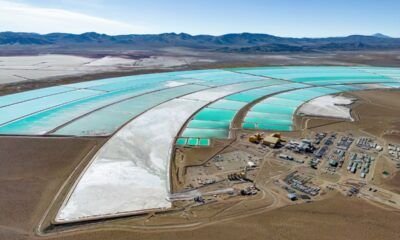INTERNACIONAL
Supreme Court to debate Trump restrictions on birthright citizenship and enforcement of nationwide injunctions
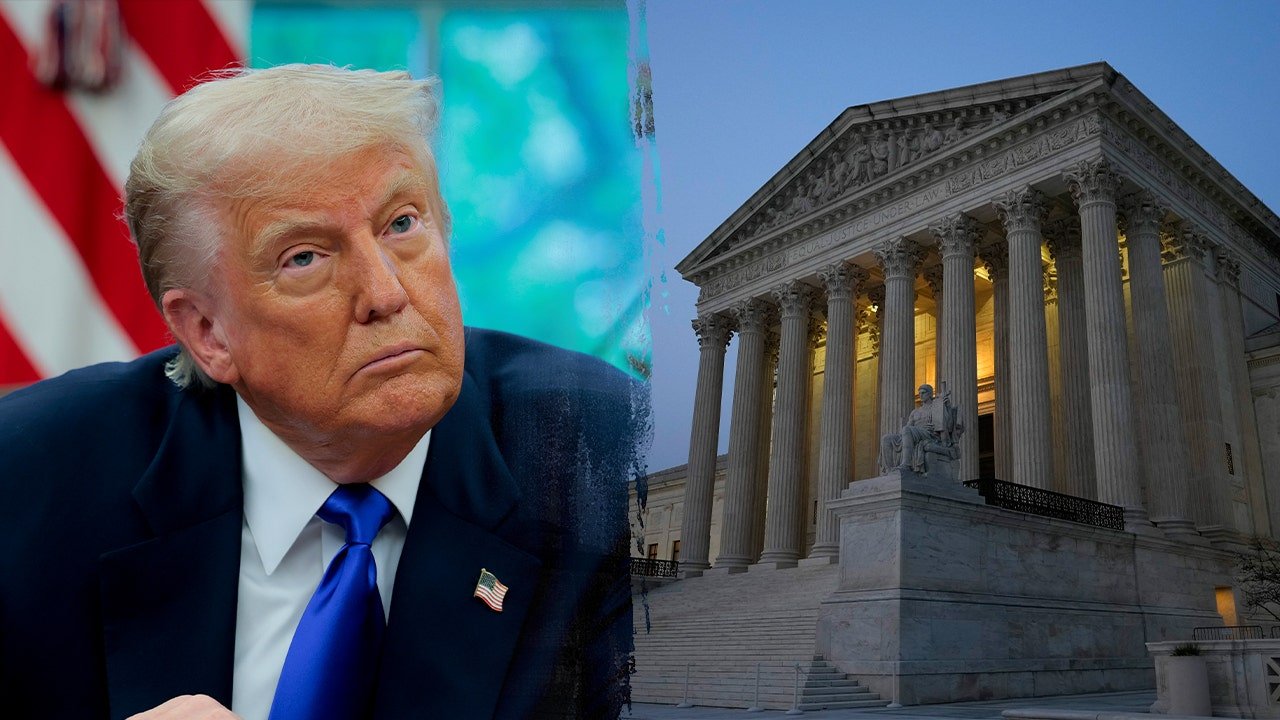
The case on the Supreme Court’s docket this week ostensibly deals with a challenge to the Trump administration’s efforts to narrow the definition of birthright citizenship.
But overriding that important constitutional debate is a more immediate and potentially far-reaching test of judicial power: the ability of individual federal judges to issue universal or nationwide injunctions, preventing temporary enforcement of President Donald Trump’s sweeping executive actions.
That will be the focus when the nine justices hear oral arguments Thursday morning about how President Trump’s restrictions on who can be called an American citizen can proceed in the lower federal courts.
Trump signed the executive order on his first day back in office that would end automatic citizenship for children of people in the U.S. illegally.
SUPREME COURT POISED TO MAKE MAJOR DECISION THAT COULD SET LIMITS ON THE POWER OF DISTRICT JUDGES
In addressing the Trump administration’s birthright citizenship case, the Supreme Court will also be posed a much broader question concerning the injunction power of federal judges. (Getty Images)
Separate coalitions of about two dozen states, along with immigrant rights groups, and private individuals — including several pregnant women in Maryland — have sued.
Three separate federal judges subsequently issued orders temporarily blocking enforcement across the country while the issues are fully litigated in court. Appeals courts have declined to disturb those rulings.
Now the three consolidated cases come to the high court in an unusual scenario, a rare May oral argument that has been fast-tracked for an expected ruling in coming days or weeks.
The executive order remains on hold nationwide until the justices decide.
But the cases will likely not be decided on the merits at this stage, only on whether to narrow the scope of those injunctions. That would allow the policy to take effect in limited parts of the country or only to those plaintiffs actually suing over the president’s authority.
SUPREME COURT TO HEAR ORAL ARGUMENTS IN BIRTHRIGHT CITIZENSHIP CASE
A high court decision could be sweeping, setting a precedent that would affect the more than 310 — and counting — federal lawsuits against White House actions filed since Jan. 20, according to a Fox News data analysis.
Of those, more than 200 judicial orders have halted large parts of the president’s agenda from being enacted, almost 40 of them nationwide injunctions. Dozens of other cases have seen no legal action so far on gateway issues like temporary enforcement.
While the Supreme Court has never ruled directly on the use of universal injunctions, several conservative justices have expressed concerns over power.
Justice Clarence Thomas in 2018 labeled them «legally and historically dubious,» adding, «These injunctions are beginning to take a toll on the federal court system – preventing legal questions from percolating through the federal courts, encouraging forum shopping, and making every case a national emergency for the courts and for the Executive Branch.»

Justice Clarence Thomas has called universal injunctions «legally and historically dubious.» (Drew Angerer/Getty Images)
Emergency docket and politics of the moment
And it comes to the Supreme Court as part of the so-called emergency or «shadow» docket, time-sensitive appeals known officially as «applications» that usually arrive in the early stages.
They seek to temporarily block or delay a lower court or government action that, despite its procedurally narrow posture, can have immediate and far-reaching implications.
Things like requests for stays of execution, voting restrictions, COVID vaccine mandates or access to a federally approved abortion medication and, since January, Trump’s sweeping executive reform plans.
Some members of the court have expressed concern that these kinds of appeals are arriving with greater frequency in recent years, high-profile issues leading to rushed decisions without the benefit of full briefing or deliberation.
‘ACTIVIST’ JUDGES KEEP TRYING TO CURB TRUMP’S AGENDA – HERE’S HOW HE COULD PUSH BACK
Justice Elena Kagan last year said the shadow docket’s caseload has been «relentless,» adding, «We’ve gotten into a pattern where we’re doing too many of them.»
The pace this term has only increased with the new administration frustrated at dozens of lower court setbacks.
«We’ve seen a lot of justices critical of the fact that the court is taking an increasing number of cases and deciding them using the shadow docket,» said Thomas Dupree, a former top Justice Department lawyer and a top appellate advocate.
«These justices say, ‘Look, we don’t have to decide this on an emergency basis. We can wait.’»

The Supreme Court’s «shadow» docket caseload is «relentless,» according to Justice Elena Kagan. (Mark Wilson/Getty Images)
Many progressive lawyers complain the Trump administration has been too eager to bypass the normal district and intermediate appellate court process, seeking quick, end-around Supreme Court review on consequential questions of law only when it loses.
The debate over birthright citizenship and injunctions is expected to expose further ideological divides on the court’s 6-3 conservative majority.
That is especially true when it comes to the 13 challenges over Trump policies that have reached the justices so far, with six of them awaiting a ruling.
The court’s three more liberal justices have pushed back at several preliminary victories for the administration, including its ban on transgender individuals serving in the military and the use of the Alien Enemies Act to deport scores of illegal immigrants suspected of criminal gang activity in the U.S.
TRUMP’S REMARKS COULD COME BACK TO BITE HIM IN ABREGO GARCIA DEPORTATION BATTLE
Dissenting in one such emergency appeal over the deportations to El Salvador, Justice Sonia Sotomayor wrote, «The Government’s conduct in this litigation poses an extraordinary threat to the rule of law.»
«Our job is to stand up for people who can’t do it themselves. And our job is to be the champion of lost causes,» Sotomayor separately told an American Bar Association audience last week. «But, right now, we can’t lose the battles we are facing. And we need trained and passionate and committed lawyers to fight this fight.»

Justice Sonia Sotomayor (Jahi Chikwendiu/The Washington Post via Getty Images)
Trump has made no secret of his disdain for judges who have ruled against his policies or at least blocked them from being immediately implemented.
He called for the formal removal of one federal judge after an adverse decision over deporting illegal immigrants. That prompted Chief Justice John Roberts to issue a rare public statement, saying, «Impeachment is not an appropriate response to disagreement concerning a judicial decision.»
And in separate remarks last week, the chief justice underscored the judiciary’s duty to «check the excesses of Congress or the executive.»
The arguments
The first section of the 14th Amendment to the U.S. Constitution states, «All persons born or naturalized in the United States, and subject to the jurisdiction thereof, are citizens of the United States and of the State wherein they reside.»
Trump said last month he was «so happy» the Supreme Court will hear arguments, adding, «I think the case has been so misunderstood.»
The president said the 14th Amendment, granting automatic citizenship to people born in the U.S., was ratified right after the Civil War, which he interpreted as «all about slavery.»
«If you look at it that way, we would win that case,» the president said in Oval Office remarks.
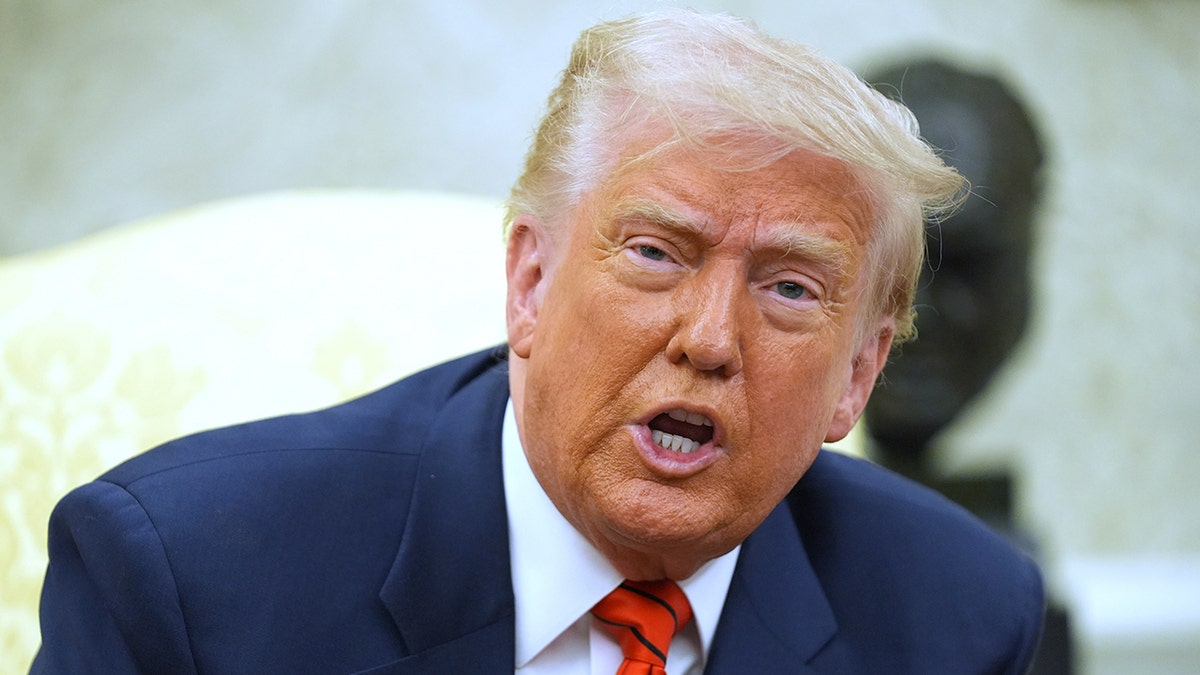
President Donald Trump has cited the 14th Amendment as being «all about» slaves freed around the time of its ratification and believes a birthright citizenship case viewed from that angle can be won. (AP Photo/Evan Vucci)
Executive Order 14160, «Protecting the Meaning and Value of American Citizenship,» would deny it to those born after Feb. 19 whose parents are illegal immigrants. And it bans federal agencies from issuing or accepting documents recognizing citizenship for those children.
An estimated 4.4 million American-born children under 18 are living with an unauthorized immigrant parent, according to the Pew Research Center. There are approximately 11 million undocumented immigrants living in the country, 3.3% of the population. Although some census experts suggest those numbers may be higher.
But in its legal brief filed with the high court, the Justice Department argues the issue now is really about judges blocking enforcement of the president’s policies while the cases weave their way through the courts, a process that could last months or even years. The government initially framed its high court appeal as a «modest request.»
CHIEF JUSTICE ROBERTS ADDRESSES DIVISIONS BETWEEN JUSTICES AFTER SEVERAL RECENT SCOTUS SKIRMISHES
«These injunctions exceed the district courts’ authority under Article III [of the Constitution] and gravely encroach on the President’s executive power under Article II,» said Solicitor General John Sauer, who will argue the administration’s case Thursday. «Until this Court decides whether nationwide injunctions are permissible, a carefully selected subset of district courts will persist in granting them as a matter of course, relying on malleable eye-of-the-beholder criteria.»
The plaintiffs counter the government is misguided in what it calls «citizenship stripping» and the use of nationwide injunctions.
CLICK HERE TO GET THE FOX NEWS APP
«Being directed to follow the law as it has been universally understood for over 125 years is not an emergency warranting the extraordinary remedy of a stay,» said Nicholas Brown, the attorney general of Washington state. «If this Court steps in when the applicant [government] is so plainly wrong on the law, there will be no end to stay applications and claims of emergency, undermining the proper role and stature of this Court. This Court should deny the applications.»
The consolidated cases are Trump v. CASA (24a884); Trump v. State of Washington (24a885); Trump v. New Jersey (24a886).
Supreme Court,Federal Judges,Donald Trump,Immigration,Immigrant Rights,Naturalization,Constitution
INTERNACIONAL
Trump’s ‘big, beautiful bill’ faces Republican family feud as Senate reveals its final text
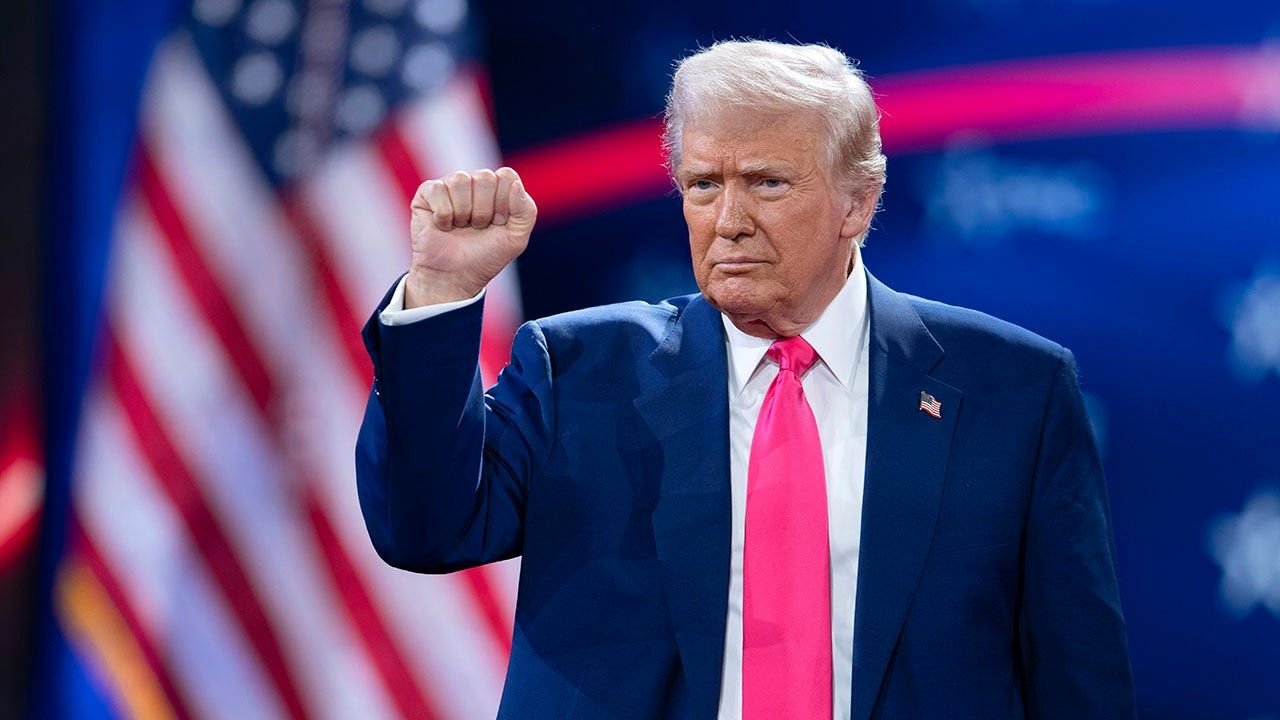
NEWYou can now listen to Fox News articles!
Senate Republicans unveiled their long-awaited version of President Donald Trump’s «big, beautiful bill,» but its survival is not guaranteed.
Senate Budget Committee Chair Lindsey Graham, R-S.C., revealed the stitched-together text of the colossal bill late Firday night.
The final product from the upper chamber is the culmination of a roughly month-long sprint to take the House GOP’s version of the bill and mold and change it. The colossal package includes separate pieces and parts from 10 Senate committees. With the introduction of the bill, a simple procedural hurdle must be passed in order to begin the countdown to final passage.
When that comes remains an open question. Senate Republicans left their daily lunch on Friday under the assumption that a vote could be teed up as early as noon on Saturday.
HOUSE CONSERVATIVES GO TO WAR WITH SENATE OVER TRUMP’S ‘BIG, BEAUTIFUL BILL’
President Donald Trump on June 18, 2025. (BRENDAN SMIALOWSKI/AFP via Getty Images)
Sen. John Kennedy, R-La., told Fox News Digital that he had «strongly encouraged» Senate Majority Leader John Thune, R-S.D., to put the bill on the floor for a vote Saturday afternoon.
«If you’re unhappy with that, you’re welcome to fill out a hurt feelings report, and we will review it carefully later,» Kennedy said. «But in the meantime, it’s time to start voting.»
But Senate Republicans’ desire to impose their will on the package and make changes to already divisive policy tweaks in the House GOP’s offering could doom the bill and derail Thune’s ambitious timeline to get it on Trump’s desk by the July 4 deadline.
However, Thune has remained firm that lawmakers would stay on course and deliver the bill to Trump by Independence Day.
When asked if he had the vote to move the package forward, Thune said «we’ll find out tomorrow.»
TOP TRUMP HEALTH OFFICIAL SLAMS DEMOCRATS FOR ‘MISLEADING’ CLAIMS ABOUT MEDICAID REFORM
But it wasn’t just lawmakers who nearly derailed the bill. The Senate parliamentarian, the true final arbiter of the bill, ruled that numerous GOP-authored provisions did not pass muster with Senate rules.
Any item in the «big, beautiful bill» must comport with the Byrd Rule, which governs the budget reconciliation process and allows for a party in power to ram legislation through the Senate while skirting the 60-vote filibuster threshold.
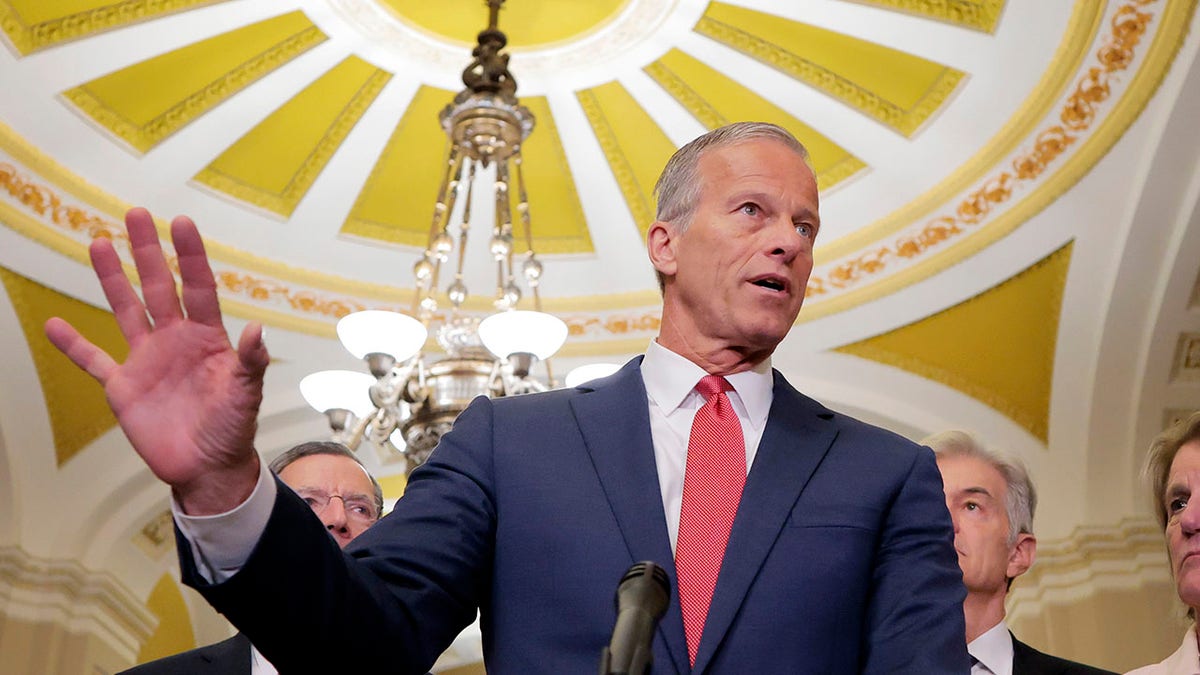
Senate Majority Leader John Thune speaks during a news conference following the weekly Senate Republican policy luncheon at the U.S. Capitol on June 17, 2025, in Washington. (Getty Images)
That sent lawmakers back to the drawing board on a slew of policy tweaks, including the Senate’s changes to the Medicaid provider tax rate, cost-sharing for food benefits and others.
Republican leaders, the White House and disparate factions within the Senate and House GOP have been meeting to find middle ground on other pain points, like tweaking the caps on state and local tax (SALT) deductions.
While the controversial Medicaid provider tax rate change remained largely the same, a $25 billion rural hospital stabilization fund was included in the bill to help attract possible holdouts that have raised concerns that the rate change would shutter rural hospitals throughout the country.
On the SALT front, there appeared to be a breakthrough on Friday. A source told Fox News that the White House and House were on board with a new plan that would keep the $40,000 cap from the House’s bill and have it reduced back down to $10,000 after five years.
But Senate Republicans are the ones that must accept it at this stage. Sen. Markwayne Mullin, R-Okla., has acted as the mediator in those negotiations, and said that he was unsure if any of his colleagues «love it.»
«But I think, as I’ve said before, I want to make sure we have enough that people can vote for than to vote against,» he said.
Still, a laundry list of other pocket issues and concerns over just how deep spending cuts in the bill go have conservatives and moderates in the House GOP and Senate pounding their chests and vowing to vote against the bill.
Republican leaders remain adamant that they will finish the mammoth package and are gambling that some lawmakers standing against the bill will buckle under the pressure from the White House and the desire to leave Washington for a short break.
Once a motion to proceed is passed, which only requires a simple majority, then begins 20 hours of debate evenly divided between both sides of the aisle.
‘BABY STEPS’: LEADER THUNE DETAILS HIS WORK TO CORRAL REPUBLICANS BEHIND TRUMP’S LEGISLATIVE VISION
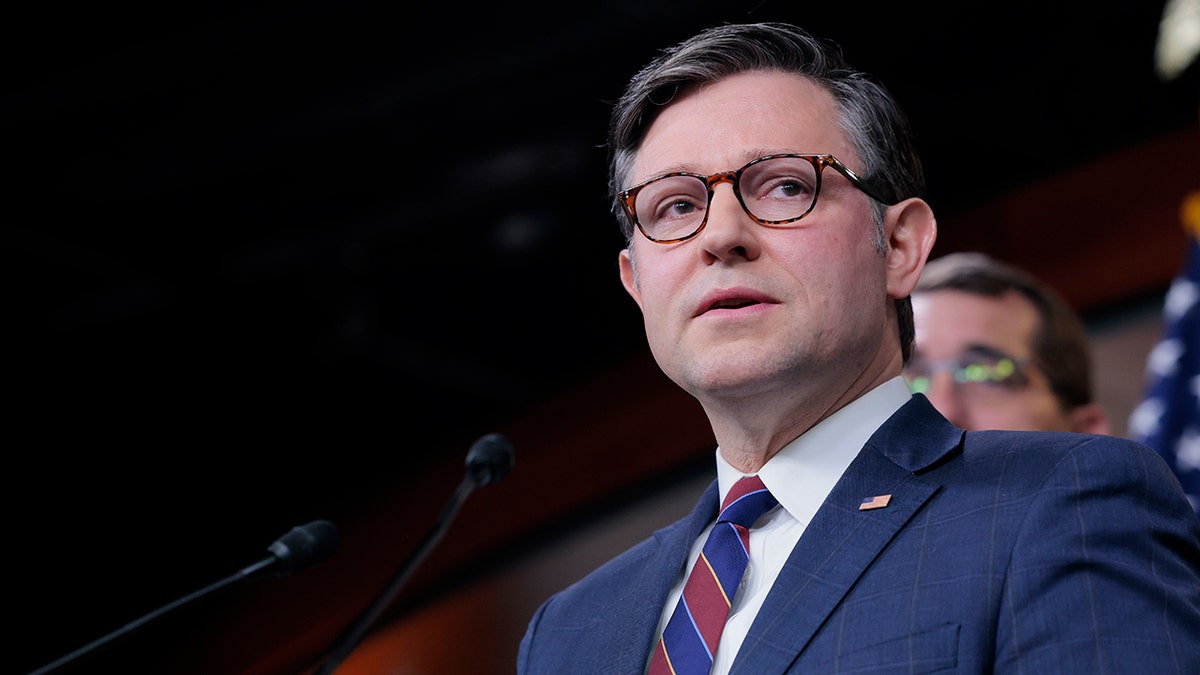
House Speaker Mike Johnson speaks during a news conference at the U.S. Capitol Building on April 1, 2025, in Washington. (Anna Moneymaker/Getty Images)
Democratic lawmakers are expected to spend the entirety of their 10 allotted hours, while Republicans will likely clock in well below their limit. From there starts the «vote-a-rama» process, when lawmakers can submit a near-endless number of amendments to the bill. Democrats will likely try to extract as much pain as possible with messaging amendments that won’t actually pass but will add more and more time to the process.
CLICK HERE TO GET THE FOX NEWS APP
Once that is complete, lawmakers will move to a final vote. If successful, the «big, beautiful bill» will again make its way back to the House, where House Speaker Mike Johnson, R-La., will again have to corral dissidents to support the legislation. It barely advanced last month, squeaking by on a one-vote margin.
Treasury Secretary Scott Bessent hammered on the importance of passing Trump’s bill on time. He met with Senate Republicans during their closed-door lunch and spread the message that advancing the colossal tax package would go a long way to giving businesses more certainty in the wake of the president’s tariffs.
«We need certainty,» he said. «With so much uncertainty, and having the bill on the president’s desk by July 4 will give us great tax certainty, and I believe, accelerate the economy in the third quarter of the year.»
INTERNACIONAL
Un hidrogel con cianobacterias podría ser una solución para combatir el cambio climático
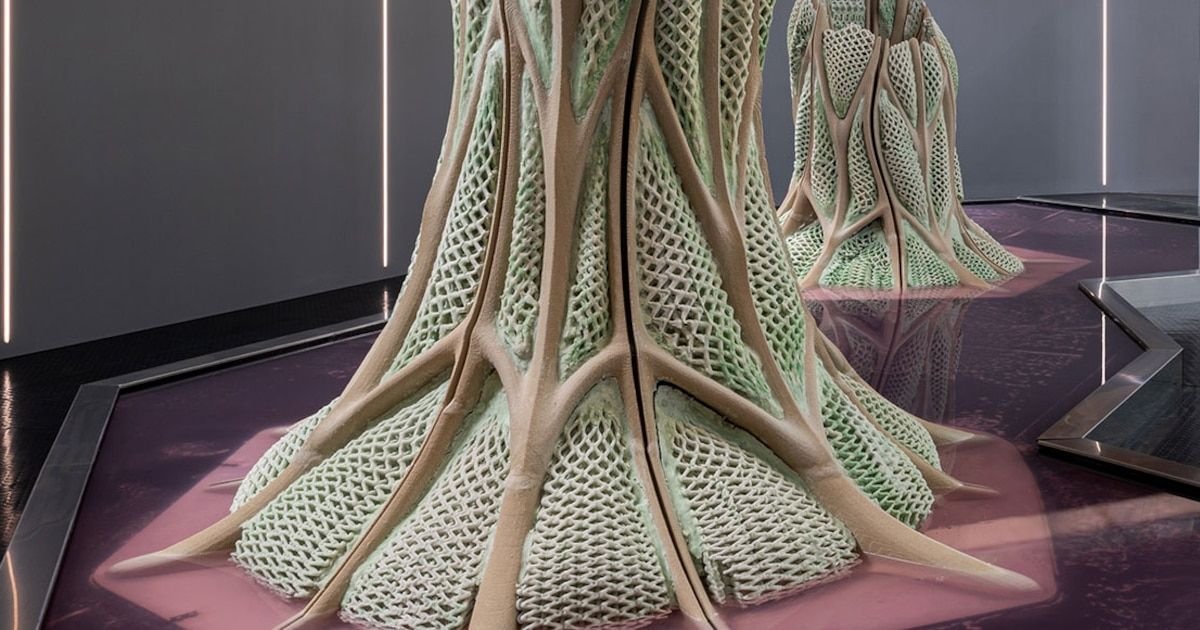
Un material puede hacer que las paredes de un edificio ayuden a limpiar el aire que las rodea y a mitigar el problema del cambio climático. Eso no es magia: es el resultado de un avance científico real realizado en una universidad pública de Suiza.
Fue realizado por investigadores de ETH Zurich, la institución que fue fundada en 1855 y tuvo como alumnos al físico Albert Einstein y a otros 21 ganadores de Premios Nobel. Incluyeron cianobacterias dentro de un hidrogel, que es un polímero inerte, y obtuvieron un material vivo artificial.
El nuevo material es capaz de capturar dióxido de carbono (CO₂) de manera eficaz, mientras genera minerales que lo almacenan de forma estable. Los resultados fueron publicados en la revista Nature Communications.

Significa que, además de transformar el CO2 en biomasa a través de la fotosíntesis, las cianobacterias inducen la formación de minerales y así se consigue un almacenamiento mucho más duradero y seguro del carbono capturado en el propio material.
Consideran que la innovación podría ofrecer una solución escalable y sostenible que elimina el CO₂ de la atmósfera al emplear procesos naturales.

El dióxido de carbono siempre ha estado presente en la atmósfera. Es parte natural del aire que se respira y del ciclo del carbono del planeta.
Pero su presencia aumentó por actividades humanas como la quema de combustibles fósiles (petróleo, gas, carbón) y la deforestación.
Este exceso de CO₂ atrapa calor en la atmósfera y eso condujo a que las temperaturas globales suban, los glaciares se derritan, los océanos se calienten, entre otros impactos.
El CO₂ no es “malo” en sí mismo: las plantas lo necesitan para hacer fotosíntesis. Pero en exceso desequilibra el sistema.
Científicos de todo el mundo buscan formas efectivas de capturar ese CO₂ para defender la salud del planeta.

La mayoría de los métodos conocidos hasta ahora son costosos, requieren mucha energía o no consiguen guardar el carbono durante mucho tiempo.
Algunos grupos han probado con técnicas químicas y otros con organismos vivos como plantas y algas.
Pero, hasta este avance, no se había combinado con éxito un material inerte y un organismo vivo que sigue activo dentro del hidrogel y tiene capacidad de almacenar carbono en formas estables.
El equipo de ETH Zurich decidió enfrentar el desafío de hacer algo muy diferente.

Para fabricar el nuevo material, el equipo usó un hidrogel, que es como una esponja blanda hecha con polímeros. Este gel deja pasar agua, luz y CO₂.
Dentro del hidrogel colocaron millones de cianobacterias, microorganismos que viven en la Tierra desde hace millones de años y pueden hacer fotosíntesis.
Las cianobacterias usan la luz solar para transformar el CO₂ del aire en alimento y oxígeno. También producen una reacción especial: su actividad provoca la formación de minerales sólidos, como la cal, que guarda el CO₂ por mucho tiempo dentro del gel.
El equipo utilizó impresión 3D para dar forma al material y optimizar la entrada de luz, agua y nutrientes. Así crearon piezas y bloques que funcionan bien para proyectos grandes.

Dalia Dranseike, quien fue primera autora del trabajo junto con Yifan Cui, explicó: “El material tiene estructuras que dejan pasar luz y distribuyen el líquido con nutrientes gracias a la capilaridad”.
El material logró resultados increíbles: en el laboratorio, pudo atrapar CO₂ de forma constante durante 400 días.
Cada gramo retuvo 26 miligramos de CO₂, y superó a otros métodos como el llamado “hormigón reciclado”. Los minerales que se forman en su interior vuelven el material más fuerte y resistente.
Las posibles aplicaciones van más allá de los experimentos. Los investigadores imaginan que el nuevo material se podría usar en edificios, fachadas y objetos urbanos para limpiar el aire y ayudar a combatir el cambio climático.

Después de los éxitos en el laboratorio, el equipo de ETH Zurich llevó su material a exposiciones internacionales de arquitectura. Andrea Shin Ling, arquitecta y miembro del equipo, fue clave en este paso.
En la Bienal de Arquitectura de Venecia montaron troncos de hasta tres metros de alto, formados por el material vivo que contiene cianobacterias. Cada tronco puede capturar 18 kilos de CO₂ por año, similar a lo que absorbe un pino adulto.
La arquitecta contó que el mayor desafío fue escalar el proceso, ya que fabricar piezas grandes es muy diferente al trabajo de laboratorio.
En tanto, en la Trienal de Milán, cubrieron tejas de madera con el hidrogel y las cianobacterias. Con el tiempo, formaron una “piel” verde sobre la madera, un signo claro de que las bacterias seguían vivas y activas capturando CO₂.
Observar el cambio de color y el trabajo de las cianobacterias resultó emocionante para el equipo.

En diálogo con Infobae, la doctora Graciela Salerno, investigadora superior del Conicet en cianobacterias y biotecnología, profesora emérita de la Universidad Nacional de Mar del Plata y vicepresidente del Comité Ejecutivo de la Fundación para Investigaciones Biológicas Aplicadas (FIBA), comentó: “Se busca desde hace varias décadas en diferentes laboratorios, el desarrollo de métodos de secuestro de dióxido de carbono a través de materiales fotosintéticos”.

Tras leer el estudio publicado en Nature Communications, la doctora Salerno, quien no participó en la investigación, opinó que los investigadores de Suiza “le han dado una vuelta interesante y desarrollaron una innovación que combina el poder de las cianobacterias con ingeniería de materiales”.
Además, la científica expresó: “Si bien falta aún escalar la producción y evaluar su implementación práctica, el hidrogel podría ser una estrategia más para combatir al cambio climático. Por supuesto, también se necesita que se reduzcan las emisiones de gases de efecto de invernadero para no seguir agravando el problema”.
INTERNACIONAL
Para Bezos y Sánchez, una boda de secretos que todos conocen
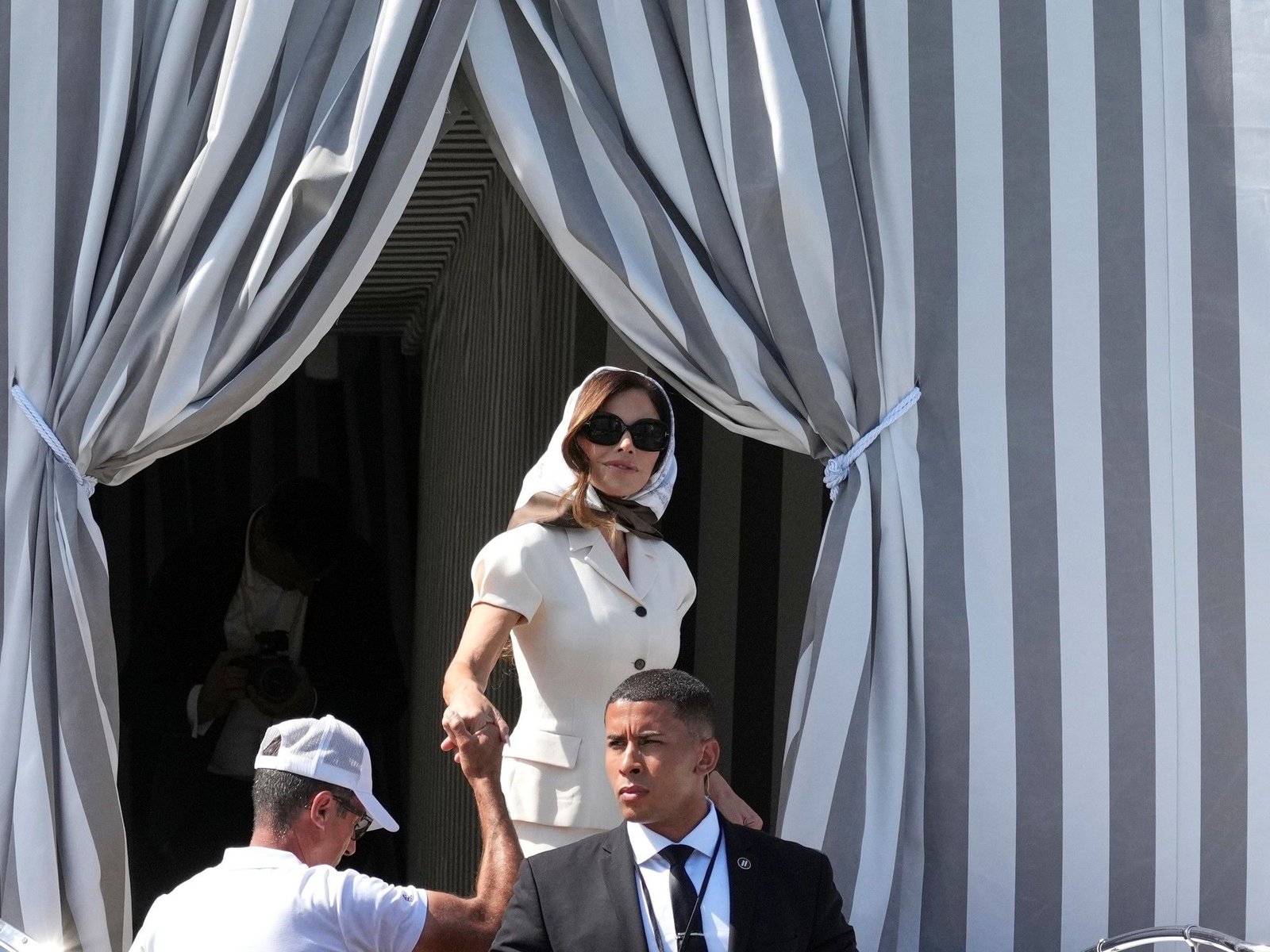
Manejos
Controles
-
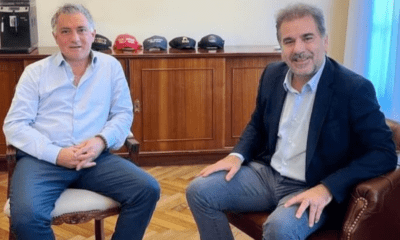
 POLITICA1 día ago
POLITICA1 día agoDesconfianza de los intendentes del PRO sobre el avance de las negociaciones con LLA: “Hasta ahora nadie acercó una propuesta”
-

 POLITICA2 días ago
POLITICA2 días agoJavier Milei apuntó duro al Chiqui Tapia por la eliminación de River y Boca: “Le hace mal al fútbol”
-
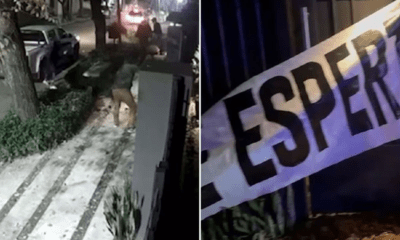
 POLITICA2 días ago
POLITICA2 días agoDetuvieron a una funcionaria del Ministerio de la Mujer bonaerense por el ataque a la casa de José Luis Espert






























